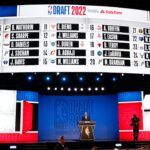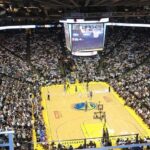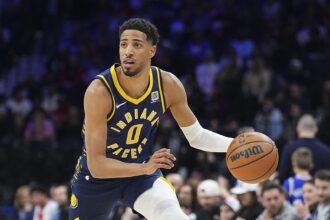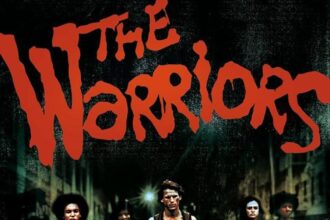As the Washington Wizards navigate a critical phase in their rebuild, comparisons to the Oklahoma City Thunder’s transformative blueprint have grown increasingly prominent among analysts and fans alike. With a roster anchored by young talent and a front office seemingly committed to long-term growth over immediate results, questions arise: Is the Wizards’ strategy a deliberate emulation of the Thunder’s path to sustained contention, or is it overly optimistic wishful thinking? This article examines the parallels and divergences between the two franchises’ approaches, evaluating whether Washington’s rebuild is poised to replicate OKC’s eventual success or if it risks falling short of such expectations.
Evaluating the Wizards’ Strategic Moves in the Context of the Thunder’s Rebuild
At first glance, the Wizards seem to be taking a page from the Thunder’s playbook-stockpiling young talent, accumulating draft picks, and strategically balancing cap space. However, unlike OKC’s highly methodical and patient approach, Washington’s acquisitions have been a mixed bag of risk-heavy moves and unproven prospects. While the Wizards have embraced youth development and flexibility, they haven’t fully committed to a long-term rebuild as meticulously as the Thunder did under Sam Presti’s stewardship.
Examining specific strategic elements highlights where the Wizards align and diverge from the Thunder model:
- Draft Capital: The Thunder amassed multiple first-round picks each year, often trading proven assets to deepen their pool. The Wizards, while active in drafts, still hold relatively fewer versatile picks moving forward.
- Asset Management: OKC focused heavily on flexible contracts and cap space, paving the way for maneuverability. Washington’s payroll remains front-loaded, limiting immediate flexibility.
- Player Development: The Thunder’s reputation for transforming late-round picks into core contributors is unmatched. The Wizards’ development pipeline is promising but lacks the sustained success of OKC’s system.
| Strategy Element | Thunder (OKC) | Wizards (WAS) |
|---|---|---|
| Draft Picks Accumulated (Next 3 years) | 12 First-Rounders | 6 First-Rounders |
| Cap Space Flexibility | High | Moderate |
| Player Development Success | Elite | Developing |
| Trade Aggressiveness | Calculated & Patient | Moderate & Reactive |
Key Player Development and Draft Decisions Shaping Washington’s Future
The Wizards’ front office has subtly pivoted towards a long-term vision reminiscent of the Oklahoma City Thunder’s celebrated rebuild. Central to this approach is a deliberate focus on nurturing a core of young talent through the draft, paired with patient development programs designed to cultivate versatile, high-upside players. Guys like Deni Avdija and Rui Hachimura are being groomed not just as contributors but as foundational pieces, emphasizing skill growth and basketball IQ over immediate flashiness. This strategy mirrors the Thunder’s blueprint of drafting smart, athletic players and providing them with the freedom and resources to flourish organically, defying the quick-fix mentality.
Draft decisions made in the last two offseasons further underscore this commitment. Washington didn’t chase marquee names in trade offers; instead, they invested heavily in players with specific traits – length, defensive potential, and playmaking ability. This is evident in their recent picks and roster moves, which prioritize flexibility and future upside. Key metrics illustrate this strategy:
| Draft Year | Pick Number | Player Attribute Focus | Development Status |
|---|---|---|---|
| 2022 | 9 | Defensive versatility | On track, showing steady growth |
| 2023 | 15 | Playmaking & floor spacing | Rookie season, flashes of potential |
While it’s still early days, Washington’s methodical investment in young talent and not overreaching in the draft echoes the Thunder’s early steps. If patience remains the guiding principle, the Wizards could emerge from the rebuild with a cohesive, hungry roster capable of sustained success rather than quick, short-lived bursts.
Recommendations for the Wizards to Avoid Common Pitfalls in Emulating the Thunder Model
To genuinely replicate the Thunder’s blueprint, the Wizards must resist the urge to rush their rebuild by focusing too heavily on immediate wins at the cost of long-term development. Instead, prioritizing the growth of young talent through regular playing time and tailored coaching can establish a sustainable foundation. Additionally, avoiding the pitfall of overvaluing short-term trades or veteran acquisitions will help maintain the core identity the Thunder built through patience and strategic asset management.
Equally important is the front office’s adherence to a data-driven approach combined with disciplined cap management. Emulating the Thunder means committing to tough decisions, sometimes leaving popular players or fan-favorites on the bench or the trade block to maintain flexibility. Below is a simplified breakdown of these priorities:
| Focus Area | Key Pitfall to Avoid | Recommended Action |
|---|---|---|
| Player Development | Rushing young players prematurely | Consistent playing time and skill-specific coaching |
| Asset Management | Overpaying for veteran presence | Maintain cap flexibility for future moves |
| Organizational Philosophy | Chasing quick wins over long-term growth | Stick to a patient rebuild strategy |
To Conclude
While the Washington Wizards have certainly shown glimpses of adopting elements from the Oklahoma City Thunder’s rebuilding strategy, it remains to be seen whether this approach will yield similar long-term success. Balancing patience with tangible progress will be key as the Wizards navigate their path forward. Ultimately, only time will reveal if they can truly replicate the blueprint that helped transform the Thunder into a competitive contender.














